Is it OK to mix potting soil with topsoil
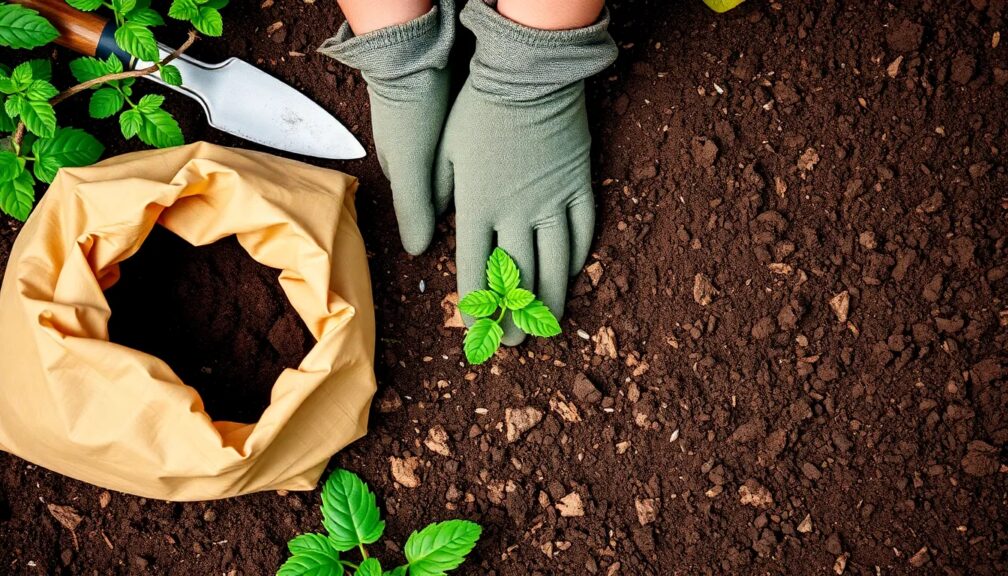
When embarking on a gardening project, one of the fundamental questions that often arises is whether mixing potting soil with topsoil is beneficial for your plants. Gardeners of all levels—from novices to experts—seek to create the optimal growing environment for their greenery. In this comprehensive guide, we delve into the characteristics of both potting soil and topsoil, exploring their advantages and potential drawbacks when used in tandem. We'll provide you with insights into soil composition, drainage, nutrient content, and best practices for mixing soils, ensuring that your gardening endeavors lead to lush, thriving plants. Whether you're potting indoor plants or enhancing your outdoor garden beds, understanding the do's and don'ts of soil mixing can make all the difference in your horticultural success.
Can topsoil be mixed with potting soil?
Absolutely, gardeners often find themselves in a quandary, contemplating the mixture of topsoil and potting soil. The allure of creating the perfect blend for their precious plants can lead to a thrilling exploration of soil dynamics. But before your spade hits the earth and you dive into the soil bin, pause and consider the secret ingredients to horticultural success.
Topsoil, the uppermost layer of Earth's crust, is rich in minerals and organic matter. It's the soil that blankets our gardens and landscapes. Potting soil, on the other hand, is a more controlled concoction, specifically designed for container gardening. It's lightweight, filled with nutrients, and often includes peat moss, perlite, and vermiculite.
Now, imagine unlocking the potential of your garden by combining these two. By mixing topsoil with potting soil, you can enhance water retention, improve aeration, and provide a nourishing environment for root development. But the real question is, how do you mix them correctly?
The secret lies in the proportions and the specific needs of your plants. Succulents and cacti crave a different soil mix than, say, your robust tomatoes or delicate ferns. The act of blending these soils isn't just a matter of practicality; it's an art form, a delicate dance of ecology that could set your garden apart from the rest.
Intrigued? You should be. The implications of such a mixture are vast, affecting everything from plant health to yield size. And while the basic concept is simple, the execution requires finesse and knowledge. Stay tuned, as we delve deeper into the art of soil mixing, and reveal the tips and tricks that could elevate your gardening game to masterful levels.
Is it good to mix dirt with potting soil?
Unraveling the secrets of perfect plant growth takes us down a path of soil discovery where the blending of outdoor dirt and potting mix is a topic of hot debate among gardeners and plant enthusiasts. The truth is, finding the right soil mixture can be the difference between a thriving garden and a disappointing collection of wilting plants.
Consider this: potting soil, often a meticulously crafted mixture of peat, vermiculite, and perlite, provides an ideal environment for container plants due to its superior drainage and aeration qualities. On the flip side, garden soil or "dirt" connects plants to a wealth of native nutrients and microorganisms, key players in natural growth and vitality.
Imagine the possibilities when you combine the two. You could harness the benefits of both worlds—creating a bespoke soil ecosystem tailored to your plants' needs. However, the advantages of such a mixture come with caveats. Knowing the right proportions, the specific type of garden soil to use, and the types of plants that will love this combo is essential.
Stay tuned to unlock the potential of this dynamic duo and elevate your gardening game to new heights. Your plants might just thank you with the lushest foliage and the most vibrant blooms you've ever seen.
What happens if you use potting soil in the ground?
Embarking on a gardening adventure, one might get tempted to take a shortcut and repurpose potting soil by mixing it into garden beds. However, this seemingly innocent act can have some unexpected consequences for your outdoor oasis.
Firstly, potting soil is designed to be light and fluffy, providing your potted plants with excellent drainage and aeration. But when introduced to the open ground, this engineered mix can clash with the native soil, leading to perplexing changes in soil structure and water dynamics. You might be surprised to learn how this can affect your garden's health and productivity.
Moreover, potting soil often contains added fertilizers and water-retaining polymers that can disrupt the nutrient balance in your garden. These additives are blessings in a controlled pot environment but could become a curse in the wider ecosystem of your garden. Imagine watching your carefully nurtured plants struggle because of an imbalance you inadvertently introduced.
But wait, there's more to it. The interaction between potting soil and native ground soil can create an environment that is either too rich or too poor for some microorganisms, potentially disrupting the soil food web. Imagine the unseen battles and alliances being formed right beneath your feet, and the impact this has on your garden's future!
Don't let this information dampen your gardening spirits, though. There are ways to use potting soil in the ground effectively, but it requires a bit of know-how and finesse. Are you ready to dive deeper and unlock the secrets to harmonizing potting soil with your garden's ecosystem? Stay tuned to ensure your green space thrives and becomes the envy of every gardening enthusiast on your block.
Should I mix topsoil with existing soil?
Embarking on a gardening journey or simply looking to revitalize your landscape? The secret to a lush, vibrant garden might just lie within a simple action – the act of blending topsoil with your existing soil. But hold on, before you rush out to buy bags of topsoil, let's delve into why this could be the game-changer your garden is silently screaming for.
Imagine staring out your window at a garden that's the envy of the neighborhood – flourishing plants, robust vegetables, and a lawn so green, it looks like it's been pulled from the pages of a fairy tale. This isn't just a dream; it's a possible reality when you understand the transformative power of mixing soils.
Here's a sneak peek at what you'll discover:
1. The nutrient-rich boost that topsoil brings to your native earth, acting as a revitalizing tonic for tired, nutrient-depleted ground.
2. The amazing way mixed soil can improve drainage and aeration, giving your plants the "breath of life" they need to thrive.
3. How the right blend can protect against soil erosion, safeguarding your garden's foundation against the ravages of wind and rain.
But there's more. Mixing soils isn't just a matter of tossing one onto the other; it's an art. The proportions, the method, the timing – each plays a crucial role in the alchemy of perfect soil. And let's not forget about the satisfaction that comes with mastering this art. The knowledge that you've tuned into the very heartbeat of your garden and provided it with the essence of growth is enough to warm any gardener's soul.
You're on the cusp of uncovering the secrets that could elevate your gardening game to masterful levels. Don't let this moment slip through your fingers. It's time to roll up your sleeves and dive into the world of soil blending. Your dream garden awaits, and it all starts with understanding the synergy between topsoil and the world beneath our feet.
Is it ok to mix potting soil with topsoil reddit
Have you ever stumbled upon the gardeners' debate that's quietly taking the internet by storm? It's the kind of insider knowledge that you might miss if you're not paying attention, but once you hear about it, you'll want to know more. The question on every green thumb's lips: Can you really mix potting soil with topsoil?
Understanding the differences between these two types of soil is crucial. Potting soil is designed specifically for potted plants, providing a lightweight and sterile environment that encourages root growth. On the other hand, topsoil is the uppermost layer of the earth's surface, teeming with organic matter and nutrients.
But here's where it gets interesting. Combining these two can create a supercharged blend for your garden. Imagine the growth and vitality of your plants as they benefit from the best of both worlds. However, there's a catch – getting the proportions right is akin to a high-stakes alchemy.
The right mix could mean the difference between a thriving garden and a disaster. Gardeners on Reddit are diving deep into this topic, exchanging tips and tricks that could revolutionize your gardening techniques. The experiences shared are not just informative; they are transformative.
1. One user swears by a 50/50 mix, claiming it brings unparalleled lushness to their garden.
2. Another suggests layering the soils to provide a gradual nutrient release.
3. Yet, a seasoned gardener warns about the weight and drainage issues that can spell trouble for delicate plants.
The buzz around this topic has created a fear of missing out for anyone who isn't in the loop. Don't be left wondering what could have been for your garden. There's a wealth of knowledge out there to harness, and the Reddit community is where it's at. Join the conversation, experiment, and see your plants flourish like never before.
Consejo final: Ensure that the mixture of potting soil and topsoil is appropriate for the plants you intend to grow. The mix should provide sufficient drainage yet retain adequate moisture. Adjust the proportions based on your specific gardening needs and always monitor your plants for signs of distress or thriving growth. Happy gardening and may your green space flourish!
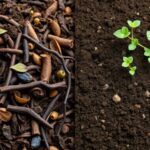 What's better compost or topsoil
What's better compost or topsoil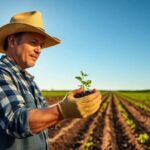 Can you plant immediately after tilling
Can you plant immediately after tilling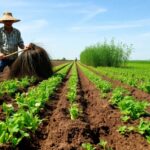 Does tilling cause more weeds
Does tilling cause more weeds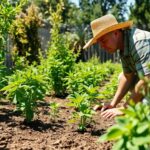 Do I need to remove weeds before tilling
Do I need to remove weeds before tilling What is better a tiller or cultivator
What is better a tiller or cultivatorIf you want to know more about similar articles like Is it OK to mix potting soil with topsoil you can visit category Gardening Tools.